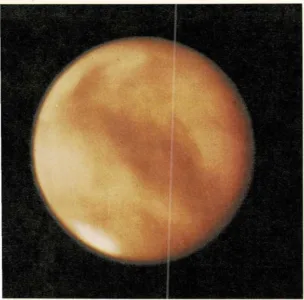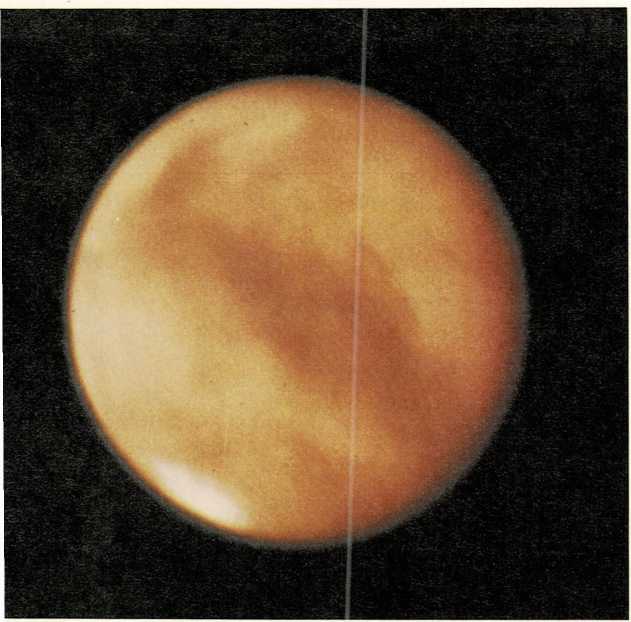
The red planet
At night, you can sometimes see a bright “star” that shines with a
reddish gleam. It is Mars, the “red planet,” named after the Roman god
of war. Mars is the fourth planet from the sun —about 142 million
miles (228 million kilometers) away.
Some parts of Mars look like the moon. But Mars isn’t a dead world like
the moon. It has a thin atmosphere made up of several gases, and thin
blue and thick white clouds move across its sky. Fierce windstorms whirl
sand up from the plains
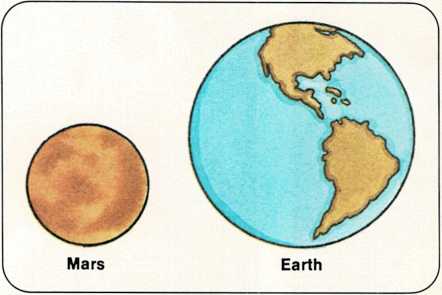
the surface of Mars
This picture was taken by a space vehicle that landed on Mars. The
orange sky is caused by red dust in the atmosphere.

Volcano on Mars
A giant volcano on Mars can be seen near the top of this photograph.
Mars’s north pole
The north and south poles of Mars are covered with snow, just like the
poles on Earth.
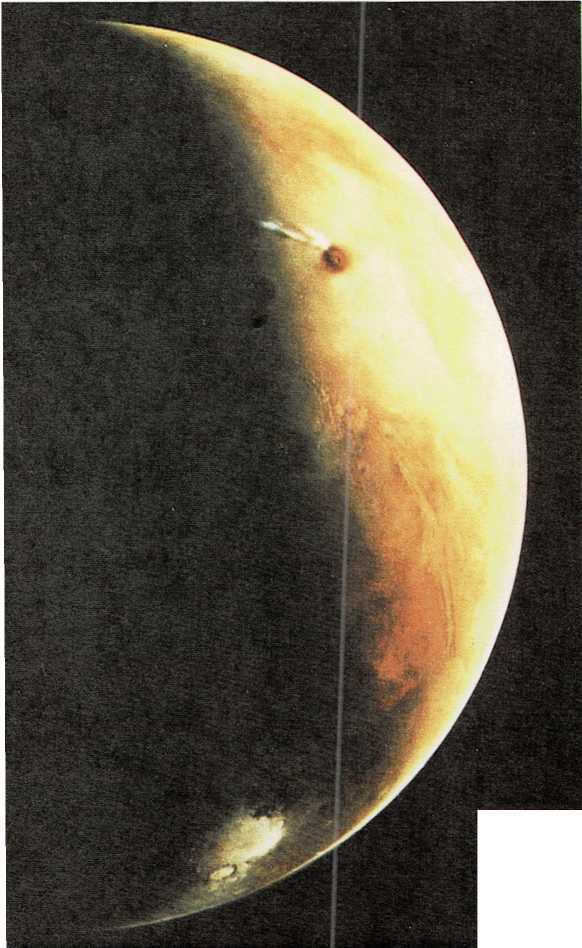
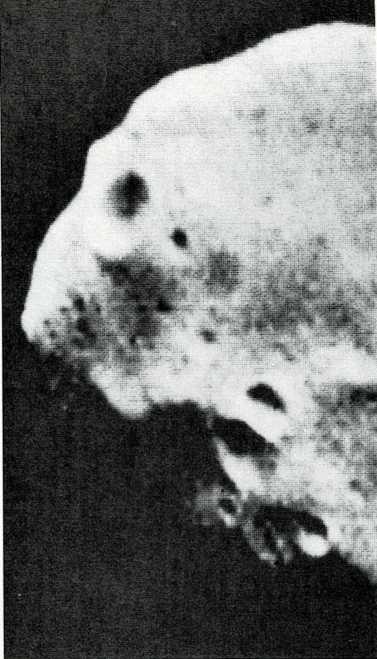
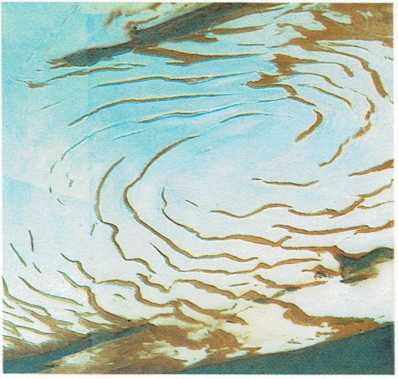

a Martian moon
Phobos, Mars’s largest moon, is a lumpy rock about fourteen miles (23
kilometers) wide.
and fill the air with dust. This dust gives the Martian sky its strange
orange color.
There are volcanoes on Mars. One of them is two times higher and many
times wider than Mount Everest, the highest mountain on Earth. There are
also canyons on Mars. One of these canyons is as wide as the whole
continent of North America. And it is many times deeper than the earth’s
deepest canyon, the Grand Canyon of the Colorado River in Arizona.
Mars has two little moons that are just lumpy chunks of rock. The
largest, called Phobos, is about fourteen miles (23 kilometers) wide.
The other, Deimos, is about six miles (10 kilometers) wide.
Mars is only about half as big as the earth. Its year is nearly twice as
long as ours, but its day is about the same.

